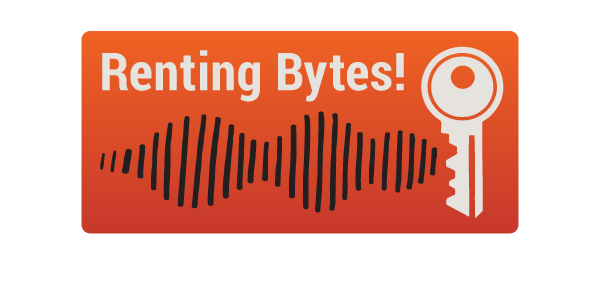Antisocial antisocial behaviour management
Jemima Mowbray • 29/11/2019
Last Friday we made our submission to the statutory review of two sections of the Residential Tenancies Act 2010 that require mandatory eviction in social housing for a number of antisocial behaviours, and short eviction times for all social housing tenants.
These provisions (section 154D and 154G of the Act) were introduced in late 2015 by the NSW Government as part of a broad new 'strikes approach' to managing so called 'antisocial behaviour/s' ranging from violent criminal conduct through inconsiderate behaviour, such as repeated noise and nuisance.
Alongside the '1 strike' mandatory eviction provisions, a 3 strike system was introduced that has been roundly criticised as having been badly implemented and largely ineffective, including by the NSW Audit Office (read our summary of their report here). Not only does the Government's ill-conceived strikes approach not work, it places some of the state's most vulnerable tenants at risk of homelessness.
We recommend a shift in approach. If you want to 'create better, safer communities' scrap the strikes and start investing in communities with a real increase in the resourcing of community based supports and programs that build connection, resilience and capacity for individuals and their communities.
Below we've provided the overview from our formal submission outlining our principled objection to the Government's strikes approach. Happy reading!
*****
In October 2015 NSW Parliament passed the Residential Tenancies and Housing Legislation Amendments (Public Housing–Antisocial Behaviour) Act 2015 (2015 Act). The resulting changes, including section 154D (mandatory terminations) and 154G (orders for possession), have been in operation since February 2016.
Section 154D introduced mandatory eviction where a social housing landlord is evicting a tenant on the basis of illegal use of the property (section 91) or serious damage to property or injury to a neighbour or the landlord (section 90). Very limited exceptions to the mandatory eviction provision exist for especially vulnerable tenants, and tenants with children who face hardship if evicted.
The introduction of this provision effectively removed much of the discretion of the NSW Civil and Administrative Tribunal (NCAT) not to terminate a tenancy where to do so would result in an unjust outcome. Previously NCAT had been required to consider whether the breach was sufficient to justify termination, and had much wider discretion in all cases to consider hardship and other circumstances of the case before making an order for termination.
Section 154G requires that for any order evicting a social housing tenant, regardless of the reason, NCAT make orders for possession no longer than 28 days after the day the NCAT makes the termination order. The discussion paper appears to infer this provision applies to instances of antisocial behaviour, but this is not accurate. The only exception to this being where NCAT is satisfied there are exceptional circumstances. Previously NCAT had a wider discretion – one still available to them for private rental tenancies - to consider the circumstances of the case when setting a date for vacant possession.
When this legislation was first proposed we cautioned against the introduction of these provisions. We held significant concerns they would weaken NCAT’s ability to act as an independent dispute resolution forum for social housing tenancies, and significantly limit NCAT’s discretion to avoid unjust outcomes. Having now seen the provisions in operation, we feel our concerns were not misplaced. Stripping discretion from NCAT has undermined the Member’s ability to apply proper scrutiny to termination decisions and weigh up the circumstances of the case to determine when orders for possession should be made. We are aware of a number of instances in which this has led to social housing tenants facing particularly vulnerable or precarious housing situations, including possible homelessness or avoidable incarceration. Previously these examples would likely have been avoided by way of NCAT discretion.
Section 154D and G were introduced alongside a number of other punitive measures aimed at addressing so called antisocial behaviour or misconduct in social housing. The social housing system in NSW plays an important role in providing a safety net for vulnerable people. Eviction should always be considered a last resort and all efforts made to sustain a tenancy. Yet the starting point in this approach is one of threatening tenancies and pursuing eviction.
There is no evidence this approach provides a genuine solution to criminal and antisocial behaviour in social housing. The discussion paper for the statutory review did not provide any internal data or point to any other published data or research to indicate a decrease in general criminal activity in public housing in NSW since the introduction of these provisions in 2016. Nor is there any data on the rates of application for termination and resulting evictions under section 90 and 91 for social housing tenancies prior to the introduction of s154D (making these mandatory), to allow comparison to after introduction to give some indication as to whether s154D serves as a deterrent. On the contrary, recent research undertaken by the Australian Housing and Urban Research Institute suggests that the heightened scale of escalation afforded by ASB provisions such as these in NSW may actually increase tenants’ unsatisfactory engagement with social housing landlords around addressing antisocial behaviour matters and the likely risk of termination.
The Auditor General’s 2018 performance audit of the Antisocial Behaviour Management Policy in public housing found:
a majority of tenants and staff did not feel tenants’ safety and security had improved since the introduction of the policy. Over a third (35%) felt it had worsened since implementation.
We recognise the disproportionate impact of the broad range of antisocial behaviour policies for Aboriginal tenants of public housing. Almost a third of all ASB allegations made have been registered against Aboriginal tenants, while Aboriginal households make up only around 7.6% of public housing tenancies. In the experience of TAASs who have provided support for Aboriginal tenants’ challenging allegations, there is often an element of racial discrimination or targeting involved with the allegations made. Many of these cases in which assistance has been provided have involved women and children. It is clear from the data provided on the use of s154D (mandatory evictions) in the discussion paper, that there is an over representation of Aboriginal tenancies impacted – 17% of mandatory evictions for severe illegal ASB have been for Aboriginal tenants.
The practical impact of the mandatory eviction policy is to extend the punishment for a possible criminal act beyond the judicial system. It also allows for punishment to be extended, where no criminal act can be adequately established in the forum in which we have as a community established the most appropriate evidentiary requirements. The judicial system is set up to determine whether a criminal act has occurred, and if so whether incarceration or community rehabilitation is most appropriate. The NCAT process for mandatory evictions prior to criminal proceedings can limit the ability of the criminal justice system to determine this. It should be noted punishment via mandatory eviction holds particularly serious ongoing consequences for the tenant and their household, as Department of Communities and Justice (DCJ, formerly Department of Family and Community Services) policy negatively classifies tenants who have been evicted in these circumstances as ineligible for future social housing.
The NSW Premier’s Priorities include a commitment to reducing street homelessness by 50% and reducing adult re-offending following release from prison by five per cent by 2023, amongst others. Neither of these priorities are made more likely by continuing the current course of punitive measures applied in a separate track to the criminal justice system. This mandatory eviction system, particularly where the system also removes access to future housing support and reduces likelihood of rehabilitation in community, means street homelessness is a far more likely outcome as is re-offending rather than engaging in rehabilitative programs.
Given the policy has had no influence on discouraging antisocial, illegal and fraudulent behavior and has demonstrably failed to improve social housing tenants’ sense of security we recommend the repeal of section 154A – 154G, in particular section 154D and G.
In place of the broad range of punitive measures currently enabled via section 154 of the Act (and implemented by DCJ via their Antisocial Behaviour Management Policy) social housing landlords should proactively offer active referrals for support before and separate from commencement of any formal or legal response and/or threat of eviction arising from misconduct or antisocial behavior.
We recommend a shift in approach more aligned with a community based framework that would see a significant increase in the resourcing of alternative support services and programs in social housing neighborhoods, especially those aimed at building and strengthening community social cohesion and resilience.




